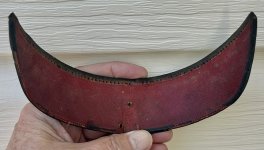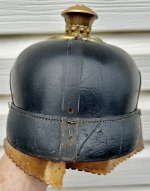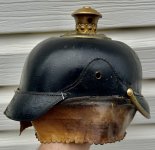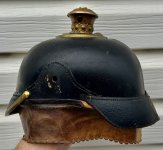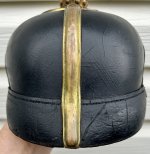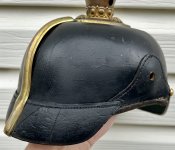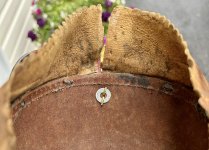I use 0.55 mm linen thread for enlisted helmets as they used a heavier gage than that used on officer grade. As long as it is relatively new, I have never had a break, but that could be due to the heavier gage. It’s available in black or a light tan which is identical to period faded white thread seen on some helmets. For officer I use upholstery gage 100% cotton. This is slightly heavier than standard clothing sewing thread. I use assorted gage tapestry needles which are blunt tipped. I used sharp ones for 35 years before I ran across these and will never go back. The trick to eliminate, or at least greatly reduce, getting un-wanted knots as you go is to unwind your needle/thread every three or four stitches. As you stitch you are unknowingly spiraling the thread. I find that I use about 50 inches of thread to stitch a single visor both passes. When I start stitching, I leave 6 inches of free thread before the triple stop knot so that it is easier to tie off the final stitch at the end of the second pass. Definitely re-wax every 20 or thirty stitches.
